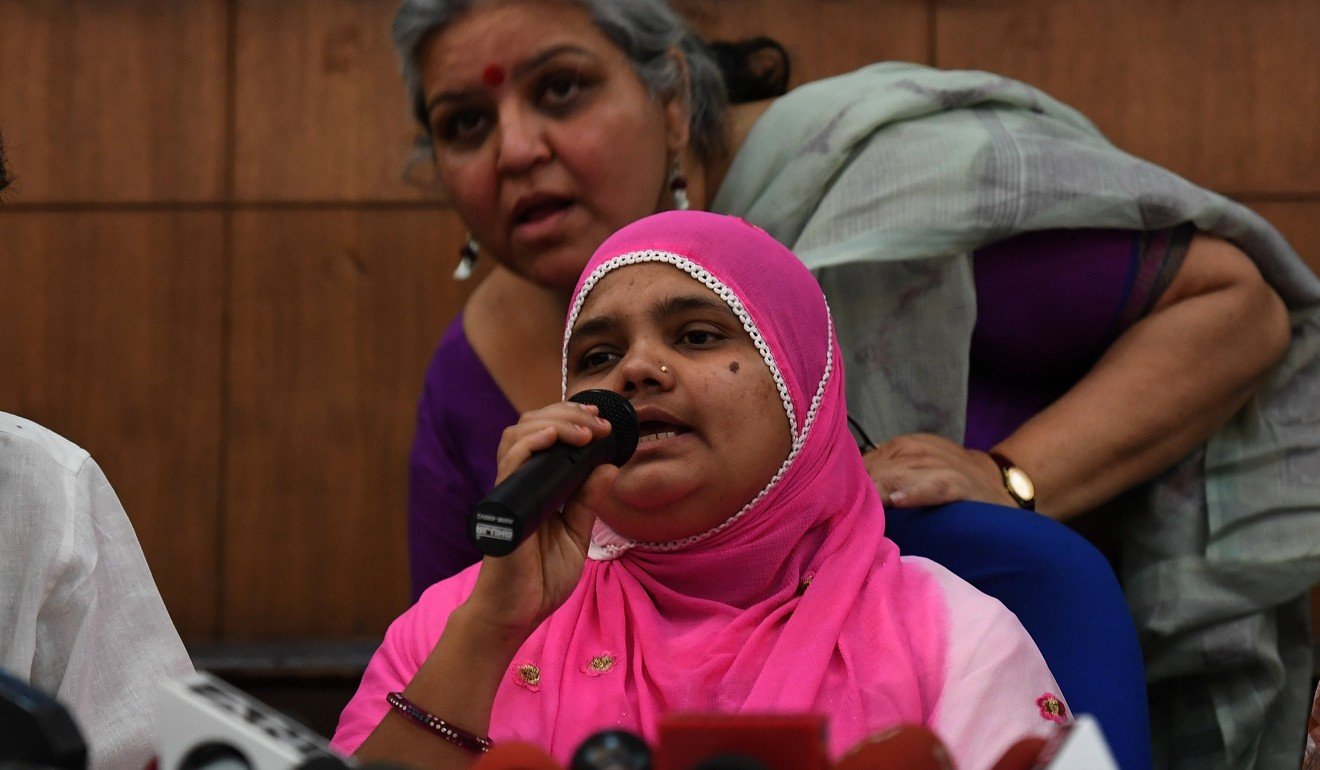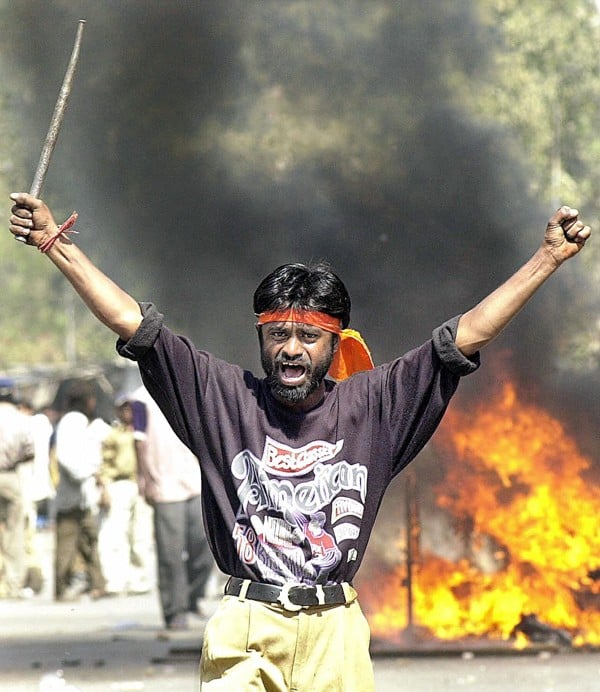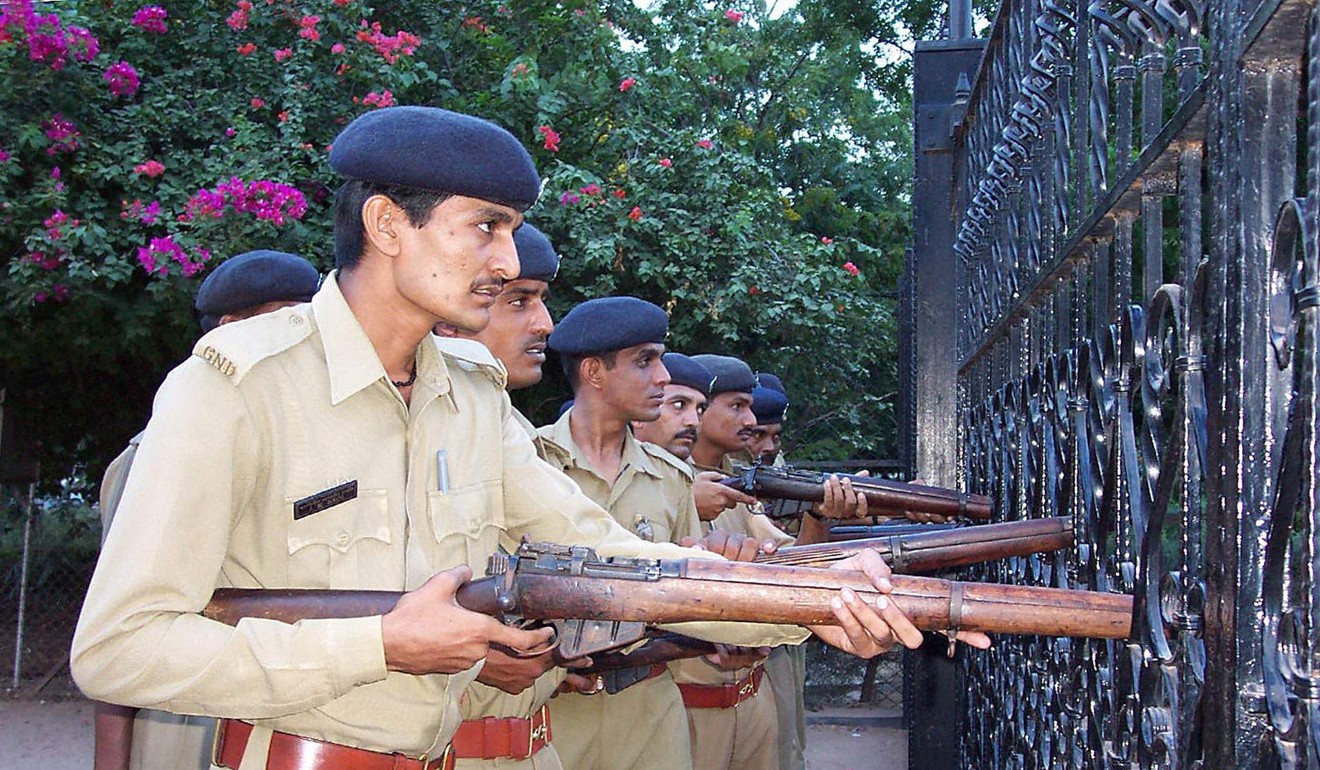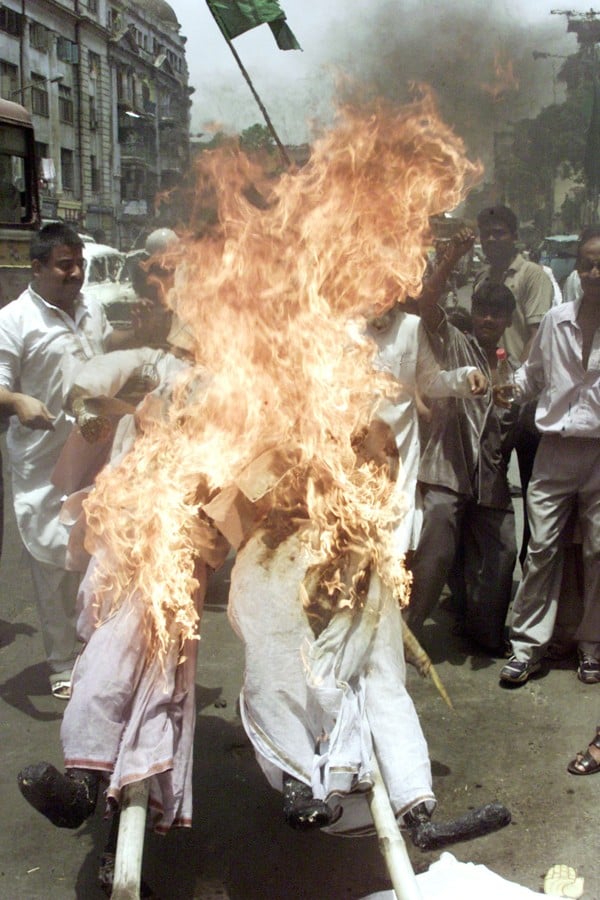
Gujarat riots: ‘They raped me, butchered my child because we were Muslims. 17 years on, I have justice – and faith in Indian law’
- Bilkis Bano watched a Hindu mob kill her child then gang-rape and murder her family in the 2002 communal riots in Gujarat, India
- Now at the end of her long fight for justice, she’s sometimes not sure which was worse – the crime or the trial
When the cargo truck carrying Bilkis Bano and her family shuddered to a halt in the Dahod district of Gujarat, India, the young mother was so afraid of what was about to happen that her shivering woke her three-year-old daughter, Saleha.
Bano, still just a teenager herself, rocked the wailing child but could not comfort her. Within seconds a mob of men armed with swords and sickles tore Saleha from her arms and smashed her skull against a rock, silencing her forever.
“Here are the Muslims, kill them, cut them,” chanted the men, most of whom Bano recognised. They were the Hindu residents of her village, men she had once addressed as brothers and uncles. She had known them since she was the same age as Saleha.
Bano and 14 members of her family had boarded the truck in a desperate attempt to escape communal riots that had swept her village and seen Hindu mobs set fire to 60 Muslim homes. They had hoped to escape to Ahmedabad, some 200km away, but were just minutes into their journey when the mob flagged down the vehicle.

Over the next few minutes, 12 men took turns to rape Bano, despite her being five months pregnant. Neither did they show any mercy to her cousin, Shamim, who had given birth a day earlier and was forced to watch as the men butchered her newborn child. The men murdered all of the 14 family members accompanying Bano that day, raping eight of the women in the process.
“Since I’d lost consciousness, they left me on the road, probably assuming I was dead,” recalls Bano, who was 19 at the time of the attack.
“When I woke up, bruised and naked, I saw the dead bodies of my family all around. I looked at Saleha one last time, found a piece of clothing to cover myself, and started walking into a nearby forest.”
LONG ROAD TO JUSTICE
It took 17 years, a string of court cases and a fight against a cover-up at state level, but Bano believes she has finally received justice for what happened to her on that fateful day of March 3, 2002. On April 23 of this year the Supreme Court of India finally recognised her ordeal, granting her 5 million rupees (US$72,000) in compensation along with housing of her choice, and a government job.
In handing down his ruling, the Chief Justice of India, Ranjan Gogoi, highlighted the need to rehabilitate Bano – who, according to her lawyer, was leading a “nomadic, hand-to-mouth existence, having lost all”.

“In today’s world, money is the best healer. We do not know whether it can heal all, but what else can we do for her … Ask for whatever compensation you want, and we will pass orders accordingly,” Justice Gogoi had said.
Why did some Indians celebrate the Christchurch shootings?
The court’s verdict may have been a big step towards restitution for survivors of the riots, whose ordeal had been covered up by Gujarat authorities, but Bano remains too scared even to share her exact location. Speaking to This Week in Asia over the phone from a temporary home in a Gujarat village, she said her faith in the Indian legal system had been rewarded.
“I never wanted revenge, I wanted justice. The Supreme Court, with this judgment, has announced that it stands with survivors, that it will protect us even if it means challenging the state,” she says.
“No citizen should have to face what I did, but I had faith in the democratic institution of India. I knew when the state turned against me, the judiciary would come to my rescue. It was difficult, keeping that faith. But it’s all I had.”
HAPPINESS SHATTERED
Bano was 15 when, in 1998, her family arranged for her to marry a cattle trader, Yakub Rasool, who was a decade older than her. Despite the age gap, the couple soon fell in love, and Saleha was born the following year. Two and a half years later, to her family’s delight, Bano announced she was pregnant again.
Hindu vigilantes riot over cow deaths, murdering two and torching cars
Bano was as happy as she had ever been, but within months the events that would lead to her darkest hour had been set in motion.
In the winter of 2002, violence broke out across Gujarat, and on February 27, a day that would scar the state forever, a fire on a long-distance train – the Sabarmati Express – killed 59 Hindu pilgrims in the city of Godhra. Rumours that Muslims had started the fire soon spread, triggering three months of sectarian riots in which Hindu mobs rampaged through cities, towns and villages across the state, raping, killing and looting.

Government figures put the death toll at 1,000 people, mostly Muslims, but some groups including Human Rights Watch (HRW) believe there were twice as many casualties.
“I have never known a riot which used the sexual subjugation of women so widely as an instrument of violence as in the recent mass barbarity in Gujarat,” said an Indian activist and writer quoted in a 2002 HRW report.
“There are reports everywhere of gang-rape, of young girls and women, often in the presence of members of their families, followed by their murder by burning alive, or by bludgeoning with a hammer, and in one case with a screwdriver.”
Indonesian-Chinese in Taiwan recall how lives changed after the 1998 riots
The Indian Supreme Court, which examined nearly 2,000 cases in coming to its verdict, said Bano had witnessed “human fury at its worst”.
“It’s still fresh in our minds – the storm that destroyed our lives,” says Rasool, Bano’s husband and one of the few members of her family not to have been aboard the truck.
“It still kills us, a little every day, day after day.”
When the violence reached their Randhikpur village, the family abandoned their burning home, and escaped into the nearby fields. They went first to the hut of a Hindu neighbour and then to a mosque, where a midwife delivered Shamim’s baby. Rasool left the mosque the next day to search for a new refuge and while he was away a mob approached the mosque.
Bano and the rest of her family left the mosque and ran through the dense forests behind their village, hoping to reach a Muslim majority settlement. When they chanced upon a trucker, who agreed to drive them to Ahmedabad, they believed their prayers had been answered. Their relief was short-lived.
THE FIGHT BACK
Bano was the lone witness of the eight gang-rapes and 14 murders perpetrated by the men who stopped the truck. Having left her for dead, the mob dispersed and she came to hours later. Realising she was the only survivor, she headed to a nearby forest where she spent the next 24 hours alone, mourning.
A tribal woman found her the following day and lent her clothes. Bano then approached a uniformed police officer, who took her to the local Limkheda police station.

“I wasn’t in the truck with my family,” recalls her husband Rasool, now 46.
“I had left the mosque to find a safe place, but when I returned, they were gone. I learnt about the incident through a newspaper report, which narrated the tragedy, and revealed that the survivor, a woman named Bilkis, was living in a relief camp. I rushed to the camp, and found her sitting in a corner, staring at nothing.”
Rasool did not ask Bano about what had happened to her. He hugged her, lent his shoulder, and offered his support in bringing the mob to justice.
Over the years, he has heard her testimony before the courts dozens of times, but to this day the pair – who restarted their family following the attack and now have five children – have not had a conversation about what happened that morning.
The real Darkest Hour: Churchill’s role in murdering 3 million Bengalis
“I still don’t know what I’d say if she ever discussed her ordeal with me,” Rasool says. Their children, four girls and one boy aged from 4-16, also know not to broach the topic.
“I think they know what happened with their mother and our family,” Rasool says. “They’d ask questions when they were little. But as they grew up, our two oldest daughters took care of their inquiries, never letting them reach us. It’s like they’re trying to protect us.”
COVER UP
Although Bano registered a police complaint, the case was dismissed within three weeks on grounds of lack of evidence. It later transpired that investigators had obliterated names of the accused from Bano’s statement, that doctors had deliberately omitted crucial pieces of evidence, and the 14 bodies of her family members had been decapitated and buried in unmarked graves to prevent identification.
Although illiterate and penniless, Bano was determined to get justice and, with the help of the National Human Rights Commission, approached the Supreme Court of India.
When you lose everything, you gain the courage to fight
“When you lose everything, you gain the courage to fight for justice,” she says. “I knew it was a going to be a long road, but I had to tread it for Saleha, for my butchered family.”
Soon after, the top court passed the investigation to the elite Central Bureau of Investigation (CBI), and almost a year after the attack, Bano’s 12 attackers were arrested.
In May 2004, the CBI submitted a final report before the court, and to ensure a fair trial, it asked for it to be held outside Gujarat. The CBI said the state had been complicit in covering up the crime.

On January 18, 2008, four years after the trial was moved to Mumbai, a special court sentenced 11 of the men to life imprisonment – the 12th had died while on trial. A further seven men – five policemen and two doctors, who had been accused of tampering with evidence and dereliction of duty – were acquitted.
Five months later, the High Court in Mumbai upheld the guilty verdicts and overturned the acquittals. The men then challenged the verdict, but the Supreme Court dismissed their appeals in 2017, holding them accountable with no room for reprieve.
It granted Bano compensation of 500,000 rupees (US$7,000), which she refused, saying it added “insult to injury”. “I was fighting some of the most powerful forces in Gujarat, and nowhere was safe,” Bano says.
“We asked for police protection, but weren’t given any and had to move home 20 times in 17 years. My husband could not have a permanent job, and my children had to keep shifting schools. We barely had money to travel for our court hearings. There were days when my children went to bed without a single morsel of food. Sometimes, when I ponder alone, I can’t tell what was worse – the crime or the trial.”
Sometimes, I can’t tell what was worse – the crime or the trial
Bano went back to court to demand greater compensation and when it ruled in her favour last month she felt that, finally, she had been vindicated. She hopes to use the money to start a non-government organisation to help other victims of the 2002 riots, whose tales are often just as tragic but lay buried, far from justice. She also hopes to use the money to make a stable life for her five children, and secure them a brighter future – such as by educating her 16-year-old daughter, who wants to be a lawyer.
“Perhaps, when she grows up, she’ll be back in that same courtroom, and will ensure no other woman has to wait 17 years for justice,” Bano says. ■

